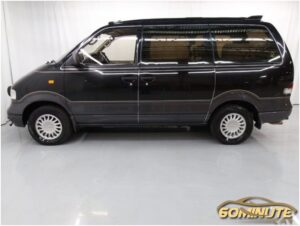japanese cars model: Largo
The Nissan Serena is a minivan manufactured by Nissan, joining the slightly larger Nissan Vanette. It was also sold as the Suzuki Landy (Japanese: スズキ・ランディ, Suzuki Randei). The car was engineered by Nissan’s Aichi Manufacturing Division and launched in 1991 as a compact passenger van, and it grew larger with each generation over the years. Earlier versions were front-engine, rear-wheel-drive layout with a live axle mounted on leaf springs.
Later versions had a multilink independent rear suspension, and were front-wheel drive or 4WD. The most popular version was the 2.3 L diesel engine version and it was unusual in that it had eight seats instead of the expected seven.
It is a “junior” model to the Nissan Elgrand in Japan; its name is from the Latin word “serēnus“, meaning “clear, tranquil, pleasant” and offers a minivan approach in comparison to the Nissan Lafesta which is an MPV. Competitors include the Toyota Noah, the Honda Stepwgn, the Mitsubishi Delica, and formerly, the Mazda Biante.
The Serena is designed to comply with Japanese vehicle class, which means its external dimensions are restricted to 4.7 m in length and 1.7 m in width.
Largo was the model name used for a Nissan passenger van based on the C23 Serena between 1992 and 1998. Unlike the previous Largo, which was essentially a widened C22 Nissan Vanette, the W30 Largo was a totally rebodied, wider Serena with more equipment such as four-wheel-drive. It was exclusive to Nissan Satio Store locations as a large load carrying vehicle next to the Sunny. The Largo was available with either a 2.4-litre petrol or a 2.0-litre turbo-diesel, both mid engined (under the front seats).

